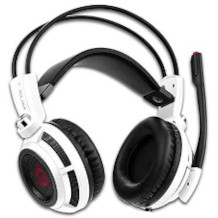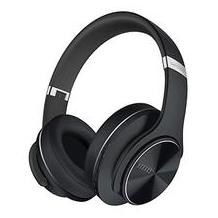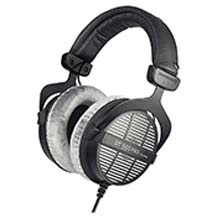Earbud purchasing advice: how to choose the right product
- What you need to know
- In-ear headphones produce amazing sound quality and cancel out background noise despite their compact size thanks to their proximity to your eadrums.
- There are now wireless Bluetooth in-ear headphones and special sport-suitable designs alongside classic wired models on the market.
- Manufacturers offer eabuds with extra ear buds in different sizes, shapes, and levels of padding so you can get the perfect fit.
- Earbud material is important for getting the most comfortable fit: you can choose from silicon to foam depending on what you prefer.
- It’s a good idea to transport your headphones with a cable winder or storage bag to prevent the cables from breaking.
Small but mighty
If you’re anything like me, music is an essential part of life, and being able to take it wherever I go is extremely important. If you don’t want to miss out on listening to your favourite songs, audiobooks, and podcasts when you’re out and about then you can’t do without a pair of headphones. You can’t expect people to listen to your music playing from your phone out loud on the bus! In fact, headphones are a great way of blocking out all that background noise. Earbuds are an especially popular type of headphone. These small, easily transportable devices provide full sound quality whilst still being able to fit in your coat pocket. They are also fantastic for sport.
Earbuds vs in-ear headphones?
Before we go into the details, it’s worth clarifying what we mean by earbuds and in-ear headphones. Some people differentiate the two terms by how deep they sit in your ear: in-ears go in your ear canal whereas earbuds sit just outside it. You might have noticed that we haven’t made this distinction in our product selection above. In this article, we will be using earbuds to refer to both earbuds and in-ear headphones, but if there’s a situation where we are specifically talking about headphones that go inside your ear canal we will use in-ear.
While on-ear and over-ear headphones play sound from outside your ears, in-ear headphones sit inside your ear where they play sound without any interferences. In other words, in-ear headphones sit inside your ear canal rather than on your outer ear. This proximity to your ear drum optimizes the sound image: more sound waves reach your ear drum successfully.
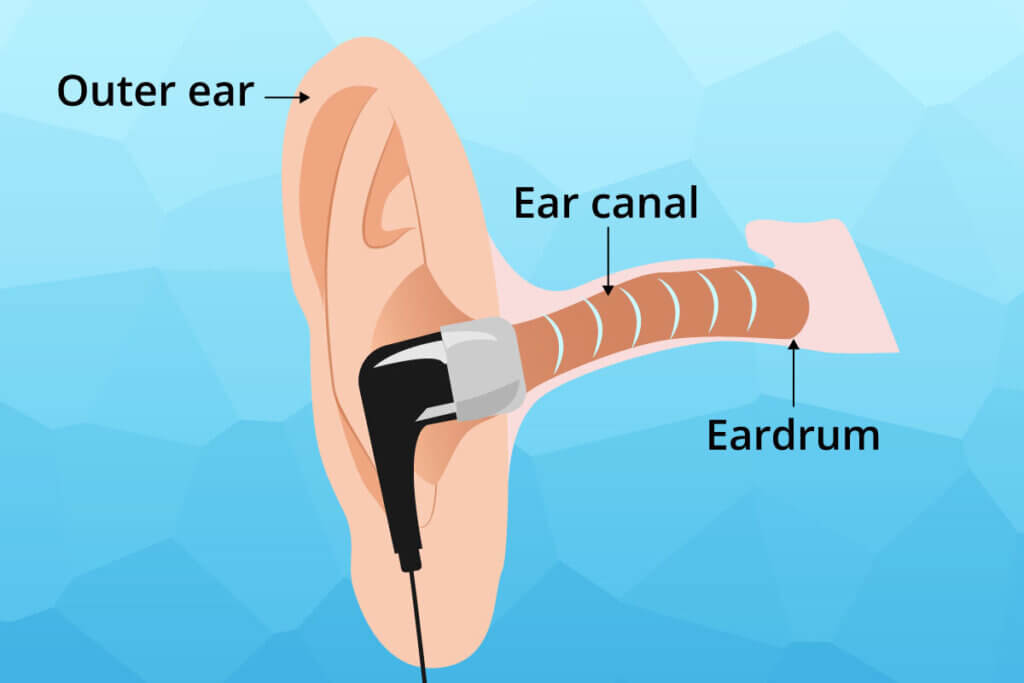
Whether wired or with Bluetooth, earbuds are in fashion right now. One of the reasons for this is that they can be the cheapest headphones. There are always special offers for new earbuds, and a lot of smartphones even come with a pair included. Prices start at as little as $6 and can run up to well over $1000, but you can get a great sounding pair for as little as $30. In fact, sound quality doesn’t always directly equate to higher prices, but for the best experience you should definitely choose a high quality pair of earbuds which will give you great quality. Read on for the most important things to consider when choosing a pair of earbuds.
In-ear pros and cons
In-ears can really hold up against the over-ear or on-ear competition. These tiny headphones are easy to store and fantastic for travelling. A lot of models have integrated microphones which you can use for hands-free calls. However, calls can feel weird when you have someone sounding like they are speaking from straight inside your head. Here are some advantages and disadvantages:
Advantages
- Good sound quality
- Noise cancelling effect for sound isolation
- Full bass response
- Small and compact
- Very light
- Different sizes of earplugs
- Ideal fit to the ear thanks to choice of buds
- No problems for glasses-wearers
- Partially sweat and water resistant
- Versatile use
- Inexpensive
Disadvantages
- Permanent feeling of pressure
- Higher risk of hearing damage due to proximity to eardrum
- Phone calls can feel unnatural
- Fall out of the ear relatively easily
Classic, wireless, or sport?
In-ear headphones are different from earbuds which sit just outside of the ear canal. Since they fit loosely, earbuds aren’t particularly suitable for sport. Sound quality also isn’t as good as with in-ears because they don’t fully sea. High-quality in-ear headphones are available both with and without a cable, and come in a range of different designs depending on what they are intended for.
Wired in-ear headphones
Since in-ear headphones with a cable get their power via the aux cable itself, they don’t need to be charged. While they may not offer the same freedom of movement as wireless models, they are at least flexible in that you don’t have to worry about charge. Wired in-ear headphones can be connected to various devices via a 3.5mm jack which offers interference-free playback. However, you should be wary of the manufacturer’s specifications regarding cable thickness: the thinner the cable, the more noises are transmitted to the ear. In addition, the chance of breaking a thin cable is higher.
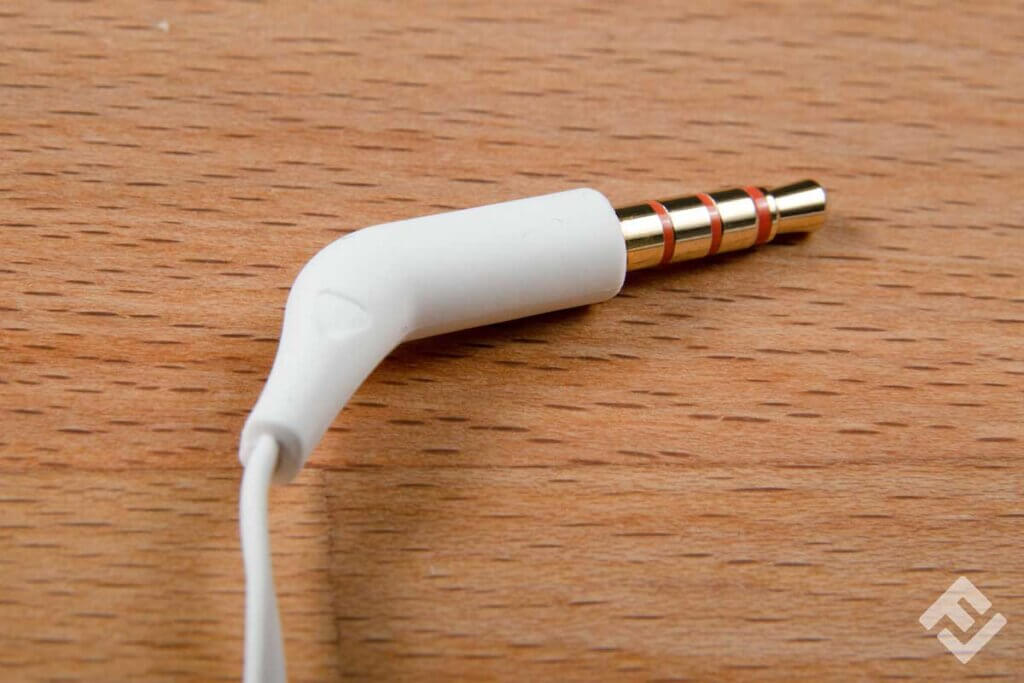
Sound quality is the major advantage in having cabled earphones. Bluetooth models will always have a slightly lower sound quality.
Bluetooth in-ear headphones
In-ear headphones with Bluetooth don’t need any annoying cables to connect to your smartphone or PC. As a result, you get better mobility which is great for listening to music or audiobooks when you’re exercising. Another advantage of wireless earphones is that it’s impossible to break a cable.
Bluetooth connection quality has been steadily improving in the last few years, but to avoid any audio interferences and connection problems you should maintain a range of no more than 10m (33′). It’s also important to remember to charge your headphones, but nowadays most in-ear headphones will charge from their case which you won’t have to charge that often. Battery life in the earphones themselves is usually between 6 and 12 hours, with more stored in the case. Another thing to watch out for is how much your smartphone battery is impacted by Bluetooth, because this can also be an issue.
Sports earphones
Special sports earphones usually work via Bluetooth. They are very light and sit very firmly in the ear so that they don’t fall out when you’re moving — some models have a silicone fastening hook, or an ear or neckband. Some sports headphones also have cables that are attached with clamps or clips so that they do not swing around despite you moving about.
Conveniently, they are usually waterproof, so you don’t have to worry about sweat or rain. Most sports headphones also have a special surface material that allows your sweat to bead up.
Comfortable, great sound, easy to use
Since in-ear headphones that come with smartphones or tablets tend to be relatively low quality, if you value great sound then it’s worth going for a new pair. There are now innovative luxury models on the market that break new ground in terms of both design and sound quality. The following criteria are important when choosing the right in-ears:
Wearing comfort
Wearing comfort depends above all on the fit of the in-ear headphones. If the headphones do not fit right then they will be uncomfortable and can even hurt. Conveniently, most in-ears come with different ear tip sizes so that everyone can get the right fit.
The material is important for getting a comfortable fit. Most in-ears have plastic or silicone tips, the latter being the most common choice among manufacturers. It is rather rare for foam to be used, which you have to press together with your index finger and thumb before putting it in so that it subsequently expands in your ear canal. If they are high-quality, they should fit the ear perfectly and seal it at the same time. Silicone earplugs that are too hard or foam earplugs that are too large are uncomfortable, difficult to clean and can also slip out.
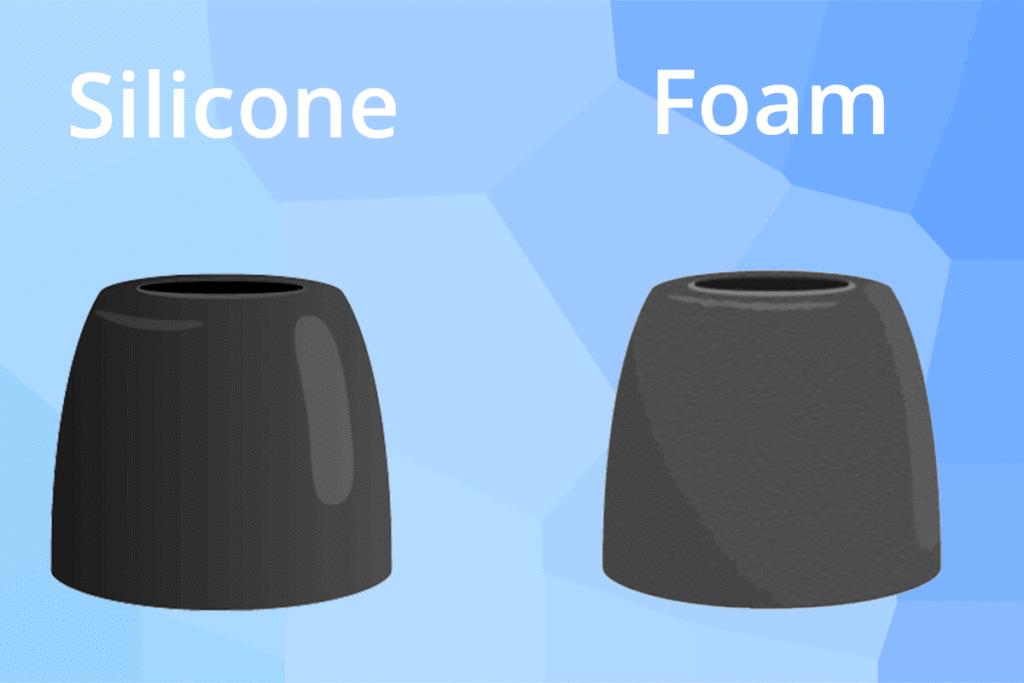
Since everyone’s ears are different, earbuds come with a choice of different pads or attachments. In this way no matter how large or small your ear is you should be able to get a good fit. The best wearing comfort comes from earmoulds, which are made by hearing aid acousticians individually for each user.
The sound quality
The best in-ears have amazing sound quality; high as well as low and medium frequencies are balanced, powerful and easy to hear. In order to achieve this, it is important that the headphones seal the ear from outside noise. The better the headphones suppress disturbing ambient noise, the more you’ll be able to enjoy the music. Blocking out background noise is especially useful for travellers who like to listen to music on the bus, train or plane. Headphones that seal well also have another advantage: you can turn the music up as much as you like without it disturbing anyone because the sound doesn’t leak out.
Usability and additional features
If you’re looking at wireless earbuds, go for a model with as long a battery life as possible — nobody wants to have to stop listening because they’re out of juice all the time. Other practical features include water resistance (at least IPX4) and weather protection, so that the headphones can also be used in wind and rain. With a built-in microphone, in-ears can also serve as a headset. Incoming phone calls can be conveniently accepted without using your mobile phone. Most important, however, is that the controls are intuitive. It’s really helpful if the music playback or even volume controls are directly integrated in the headphones. Watch out though, not all headphones and their controls are fully compatible with all devices.
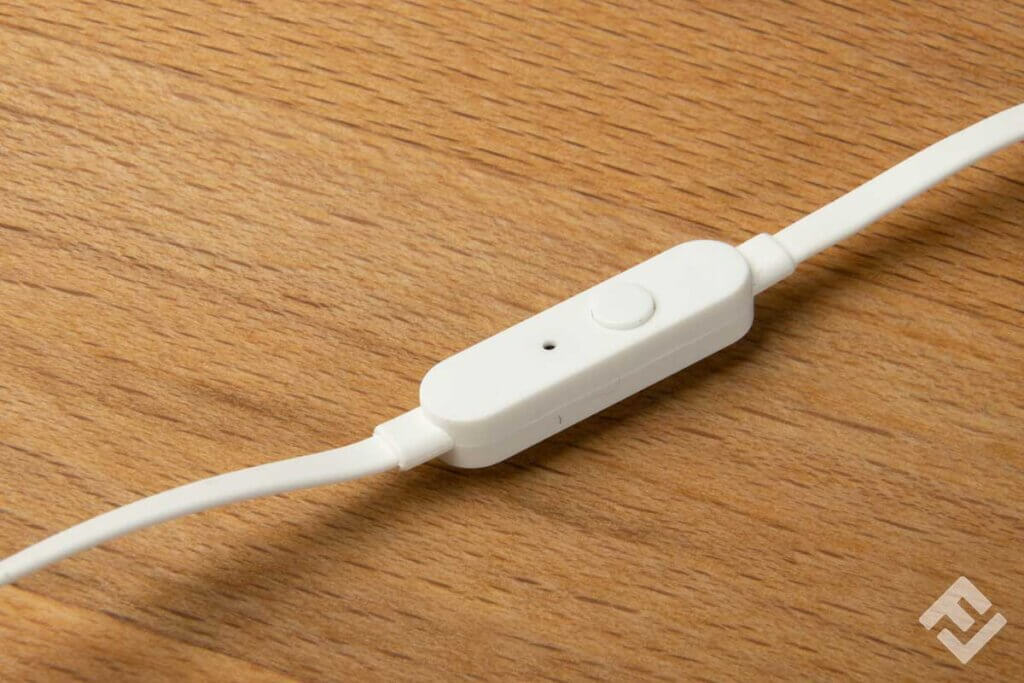
What do the numbers mean for the sound quality?
Here we look at some technical facts and figures about headphones and clarify whether more is really better:
- Size: most headphones have a diameter of about 6mm, but there are also models with a diameter of 8 or 9mm. They are usually specified in the standard sizes S, M and L.
- Impedance: measured in ohms, the impedance indicates the resistance of the headphones and how easily the in-ears can be driven by an amplifier. The headphones can only be connected to a home stereo system if the ohm number is as high as possible. High-ohm headphones are particularly impressive because they have a more sensitive driver which can produce higher fidelity sound, but at the same time they require a more powerful amplifier. For a smartphone or notebook, go for headphones with a resistance between 16 to 32 ohms. Since the batteries of the devices supply only little voltage and accordingly limit the maximum output voltage at the headphone output, low-impedance in-ears are louder on the same device than high-impedance ones.
- Sound pressure level: if the frequency range is relatively small and the decibel rating is higher than 100, the sound will be boomy and distorted. If the frequency range is large and the dB rating less than 100, then the sound will be well adjusted and great.
- Frequency range: the frequency or transmission range indicates the range of sounds that headphones can reproduce. The bass ranges from 20 to 150 Hz, the mids reach between 150 and 2000 Hz and the highs are between 2000 and 20,000 Hz. For example, a model with 20 to 20,000 Hz can produce less bass than a model with eight to 20,000 Hz. While all frequency ranges sound about the same in a neutral sounding headphones, bass-emphasised headphones emphasise the low frequencies. Headphones in the so-called “bathtub” range emphasise mainly the highs and lows, but less the mids. Bright or warm in-ears accentuate the highs, making violins, for example, sound particularly nice.
How to use in-ears properly
For many first-time users, wearing in-ears takes some getting used to. The plugs can be pressed very deeply into the ear with a twisting motion, which means they not only hold well, but also sound good. If you have had a bad experience with a particular fit in a previous purchase, you should go for a model with different ear tip sizes and attachments. Often, people find they need a different size and fit each ear, as each ear canal is unique. At best, both plugs should fit in such a way that you no longer feel them after a short time.
Is hearing damage possible?
Since the sound enters the ear more quickly and unfiltered thanks to the special design, the fine hairs in your ear canal can quickly take a beating if the music volume exceeds 85 dB. This is roughly equivalent to the noise level of a main road. As a rule, smartphones tend to have an alert for the critical volume range, for example by means of a colour marking or a warning text. In addition, some manufacturers limit the maximum volume of their headphones to a safe level. Continuous noise in particular is harmful to the human ear. Therefore, you should give your ears a break every now and then so that they can recover — especially because the lightweight devices are tempting to use continuously.
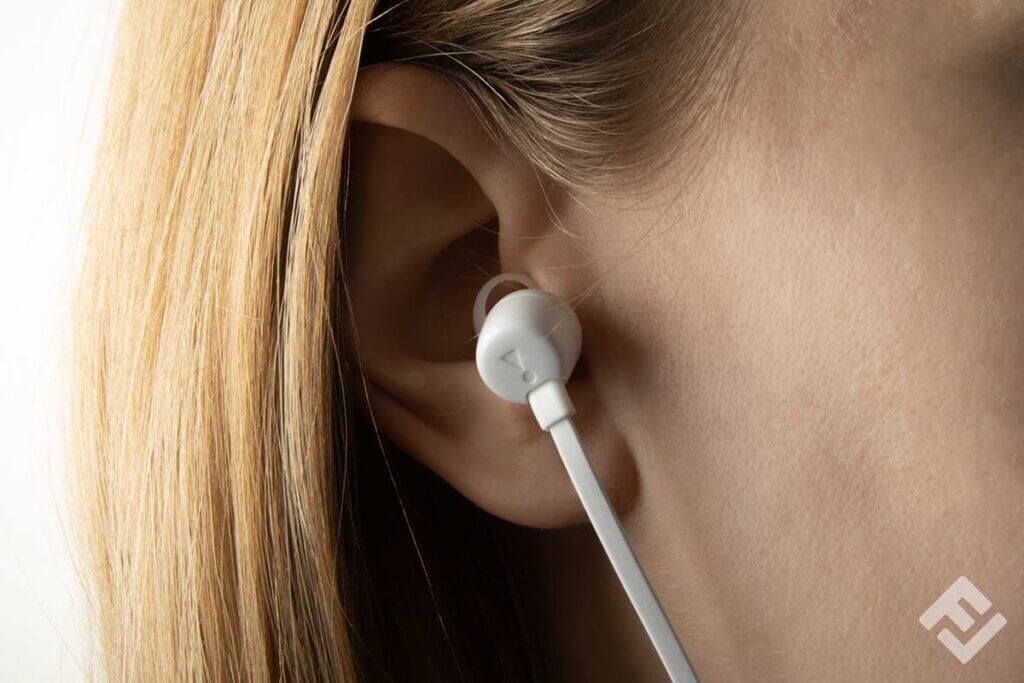
Using in-ears in road traffic isn’t a good idea because you won’t be able to hear other road users. For safety reasons, all active road users, both motorists and cyclists should refrain from using them.
Cable tangle and cable breakage
Since people usually throw their in-ears carelessly into their bag, it is not uncommon for a cable to break or at least become tangled. Untangling cables quickly gets tiresome! To prevent the cables from getting tangled or knotted, you can buy a cable winder. Cable breakage can occurs when the cable is bent or trampled on, and also when it breaks due to knotting inside. Knotting results in a loose contact or even a complete wire disconnection.
Even better than a cable winder is a storage bag, which also protects the sensitive parts from dust and other damage. Careful handling generally increases the life of the headphones.
How to keep the earplugs clean
Since bacteria and earwax quickly accumulate on the plugs of in-ear headphones, they should be cleaned regularly. Conveniently, the silicone plugs of many models can be removed from the headphones. Users can then rinse them with clean water and dry them. Some manufacturers even provide a small storage tube for the attachments, which is filled with water and shaken. Disinfectants and rubbing alcohol are also suitable for cleaning. Foam pads can be cleaned with washing-up liquid in water.
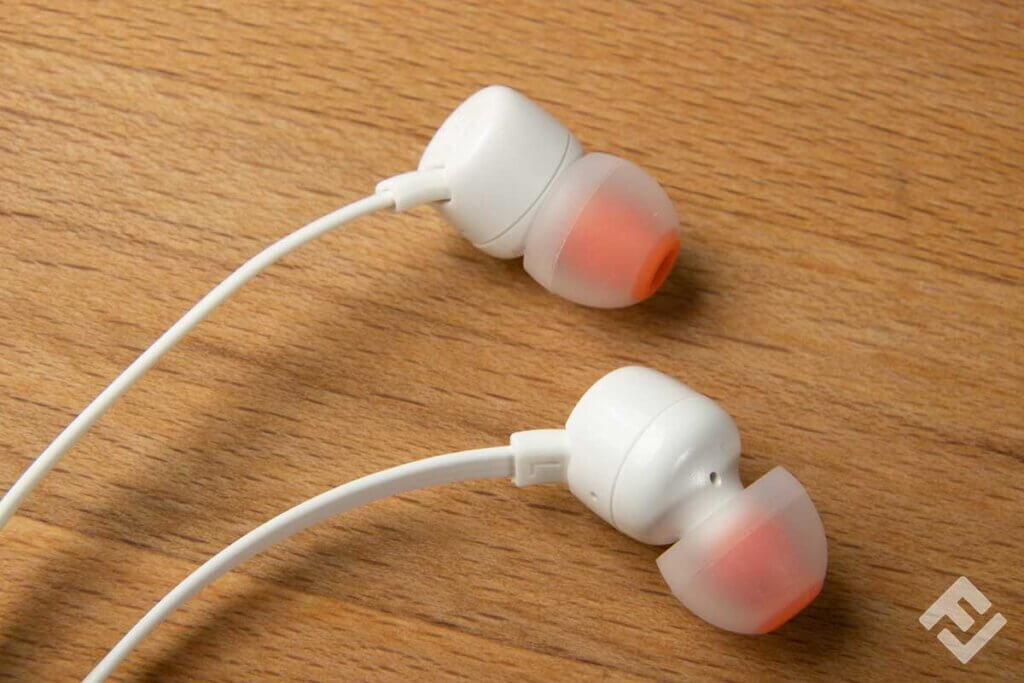
Images 1-7: © FinalCheck

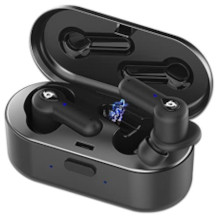
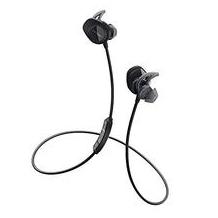
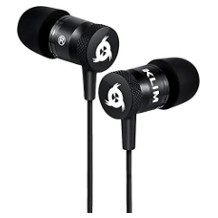
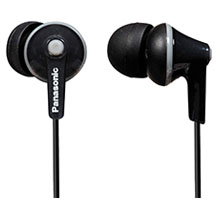
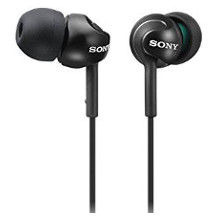
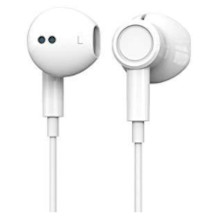

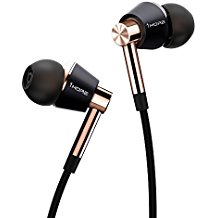
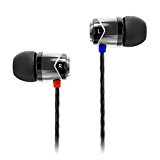
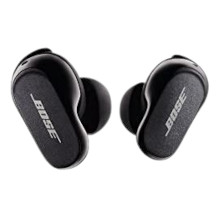
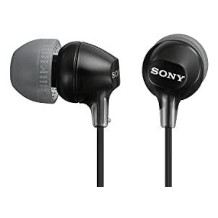

 25,218 reviews
25,218 reviews
